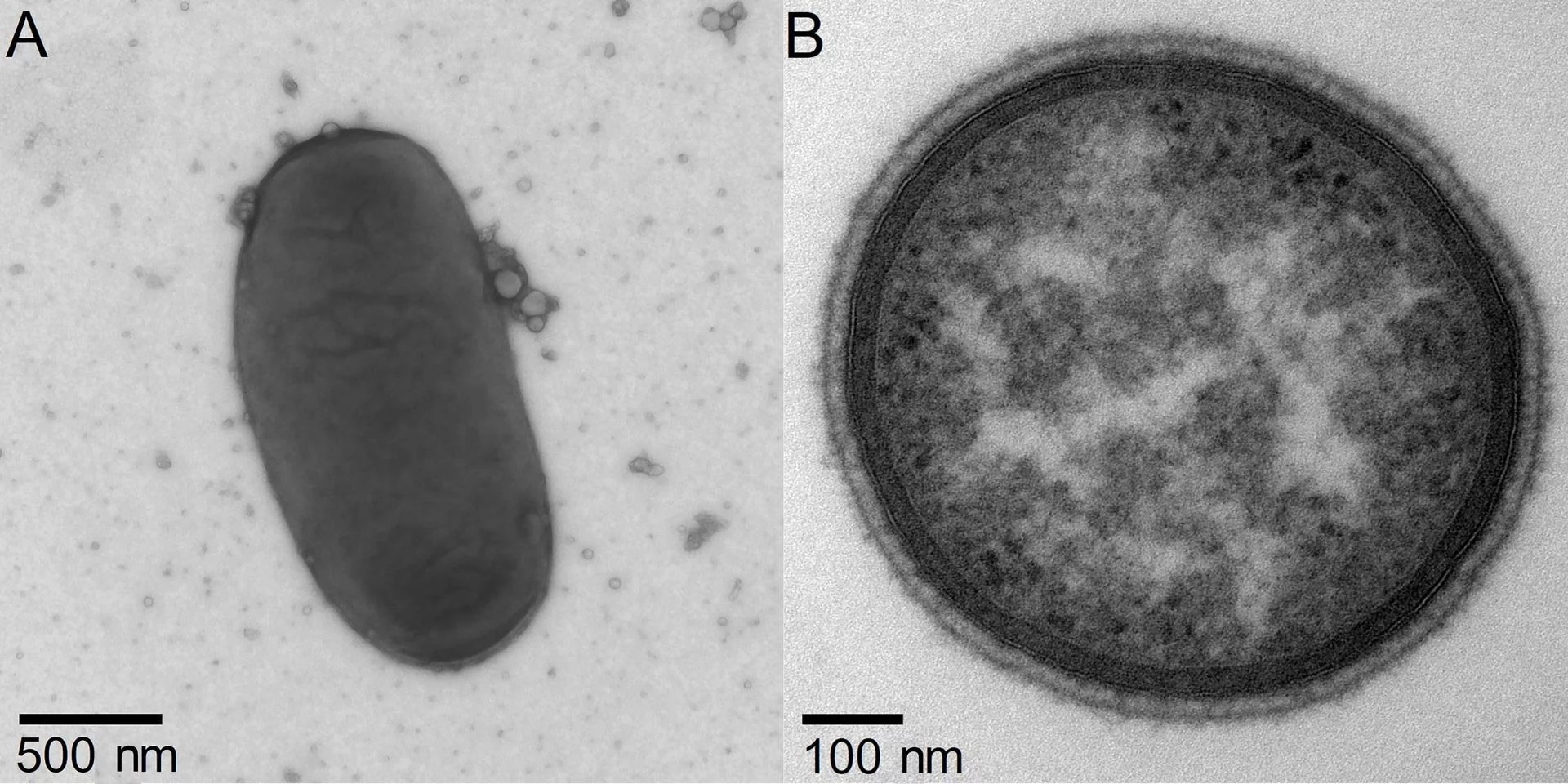Living organisms, whether plant, animal, or human, are colonized by a myriad of bacteria. Recent studies show that bacteria not only coexist with their hosts but can form mutual relationships in the form of symbiosis that benefits both the bacterium and the host. Scientists refer to a metaorganism as the whole of a host and its associated microorganisms.
 The micrographs of the electron microscopic analysis done by Dr Urska Repnik at Kiel University’s Central Microscopy Facility show one of the newly discovered bacteria (A) as a whole bacterium illustrating the shape and size, and (B) as a transverse cross section indicating the ultrastructure of the cell envelope. Image Credit: © Dr Urska Repnik, Central Microscopy Facility, Kiel University.
The micrographs of the electron microscopic analysis done by Dr Urska Repnik at Kiel University’s Central Microscopy Facility show one of the newly discovered bacteria (A) as a whole bacterium illustrating the shape and size, and (B) as a transverse cross section indicating the ultrastructure of the cell envelope. Image Credit: © Dr Urska Repnik, Central Microscopy Facility, Kiel University.
In the DFG-funded Collaborative Research Center (CRC) 1182 “Origin and Function of Metaorganisms,” scientists from Kiel University and the Max Planck Institute for Evolutionary Biology in Plön (MPI-EB) are investigating their evolutionary history and function.
Bacteroides bacteria are abundant in the microbiota of mammals and humans. The Evolutionary Medicine research group now expects to obtain fresh insights with the two recently found strains isolated from the appendix of wild house mice in the MPI-animal EB’s facility.
One goal with this discovery is to better understand in the long term why bacteria live in and on us. Many of these bacteria are still unknown. We have now gathered very basic knowledge about this type of bacteria and know, for example, from microscopic images what these bacteria look like and what size they are.”
Dr Daniel Unterweger, Research Group Leader, Max Planck Institute for Evolutionary Biology in Plön
Dr. Daniel Unterweger is also associated with Kiel University and is a member of the CRC 1182.
The finding was a complete surprise. Modern sequencing techniques are employed to decode the bacterial genome and compare it with identified bacterial species to determine the identity of newly isolated germs.
It was a big surprise that the bacteria we isolated did not match any known bacterial species in the database and accordingly did not yet have a name.”
Dr Hanna Fokt, Study First Author and Postdoctoral Researcher, Max Planck Institute for Evolutionary Biology in Plön
Dr. Hanna Fokt is also a scientist in the CRC 1182. Dr. Fokt elucidated the special moment when it was clear that she had identified a new bacterial species.
Further genomic and phenotypic studies indicate that the two strains presented here represent a new species of the genus Bacteroides. These new bacterial strains could be found not only in mice but also in other mammals, providing a deeper knowledge of the evolution of the Bacteroides genus as a crucial element of a healthy mammalian microbiota. CRC 1182 is interested in the composition of this microbiota and its interactions with host cells.
Bacteroides fragilis was the first bacterial species identified and named towards the end of the 19th century. Since then, 35 Bacteroides species have been isolated, characterized, and validated. The enhanced technical capabilities of genome sequencing today allow for the exact determination of bacterial relationships.
Bacterial cultures are stored in various locations, including the German Collection of Microorganisms and Cell Cultures in Braunschweig, and are thus available to researchers globally.
Source:
Journal reference:
Fokt, H., et al. (2022) Bacteroides muris sp. nov. isolated from the cecum of wild-derived house mice. Archives of Microbiology. doi.org/10.1007/s00203-022-03148-6.